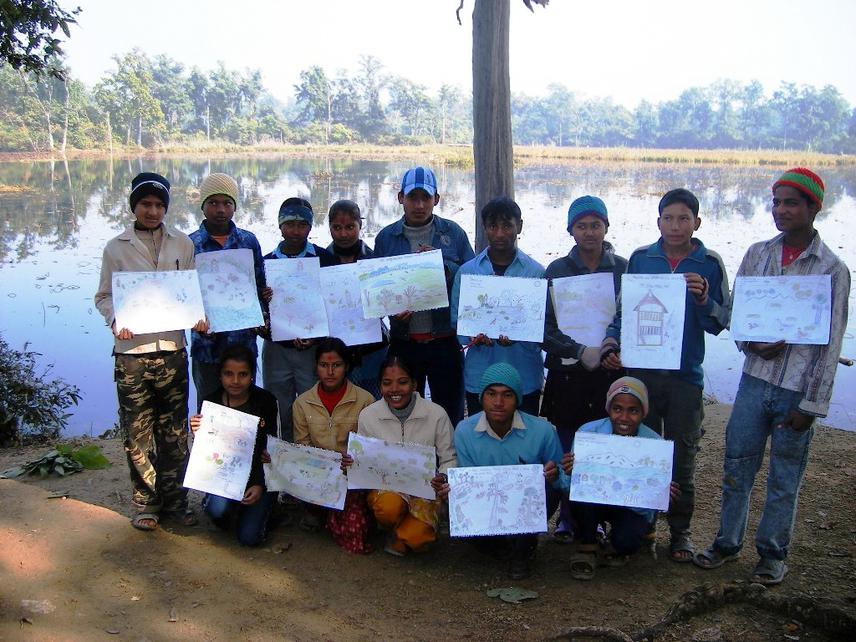Gandhiv Kafle
Other projects
18 Dec 2007
Participatory Research, Environmental Education and Capacity-Building Project for Wetland and Biodiversity Conservation, Ghodaghodi Lake, Nepal
This project aims to create awareness and impart knowledge amongst indigenous Tharu community and school students about the importance of wetlands and facilitate a process by which they can play their part in reducing threats to birds’ continued survival and improve natural environment of the wetland ecosystems.

Ghodaghodi Lake (Ramsar Site) of Nepal is still unprotected although it supports rare, vulnerable and endangered wildlife species. Around 6,700 people - including indigenous Tharu people, live around the lake area and use resources of lakes in various ways. The main threats to the lake and its biodiversity are excessive drainage of lake water, overgrazing on adjacent forest, use of poison for fishing, use of pesticides, herbicides and inorganic fertilisers on agricultural land, water pollution, eutrophication, proliferation of alien invasive species, hunting, excessive collection of fuelwood, fodder and timber and unplanned infrastructure development. The illiteracy and lack of conservation awareness among indigenous Tharu community are the major factors to speed up the activities that threaten the biodiversity especially waterfowls. So it is essential to aware them about the importance of wetlands to birds’ continued survival, their day to day activities and consequent negative impacts on wetland resources.
This project aims to create awareness and impart knowledge amongst indigenous Tharu community and school students about the importance of wetlands and facilitate a process by which they can play their part in reducing threats to birds’ continued survival and improve natural environment of the wetland ecosystems. In this manner they can gradually increase their knowledge and become sensitive to issues of wetland ecosystems and bird conservation. To achieve this, the researcher will work with local indigenous community in and around the Ghodaghodi Lake to aid them in developing their vision for the future management of wetland to support threatened flora and fauna species. Moreover, this project will involve school students to introduce them to the wetland and biodiversity through both theoretical and field-based activities and create their interest for long-term contribution for conservation. Local Conservation Clubs and online network of conservationists will be formed to bring local people and conservationists in common forum for discussion, to make educational materials available for free download access and to ensure continuity of conservation efforts in long-run. Moreover, an educational kit and brochures will be produced as a part of the project incorporating wetland and waterfowls conservation aspects.